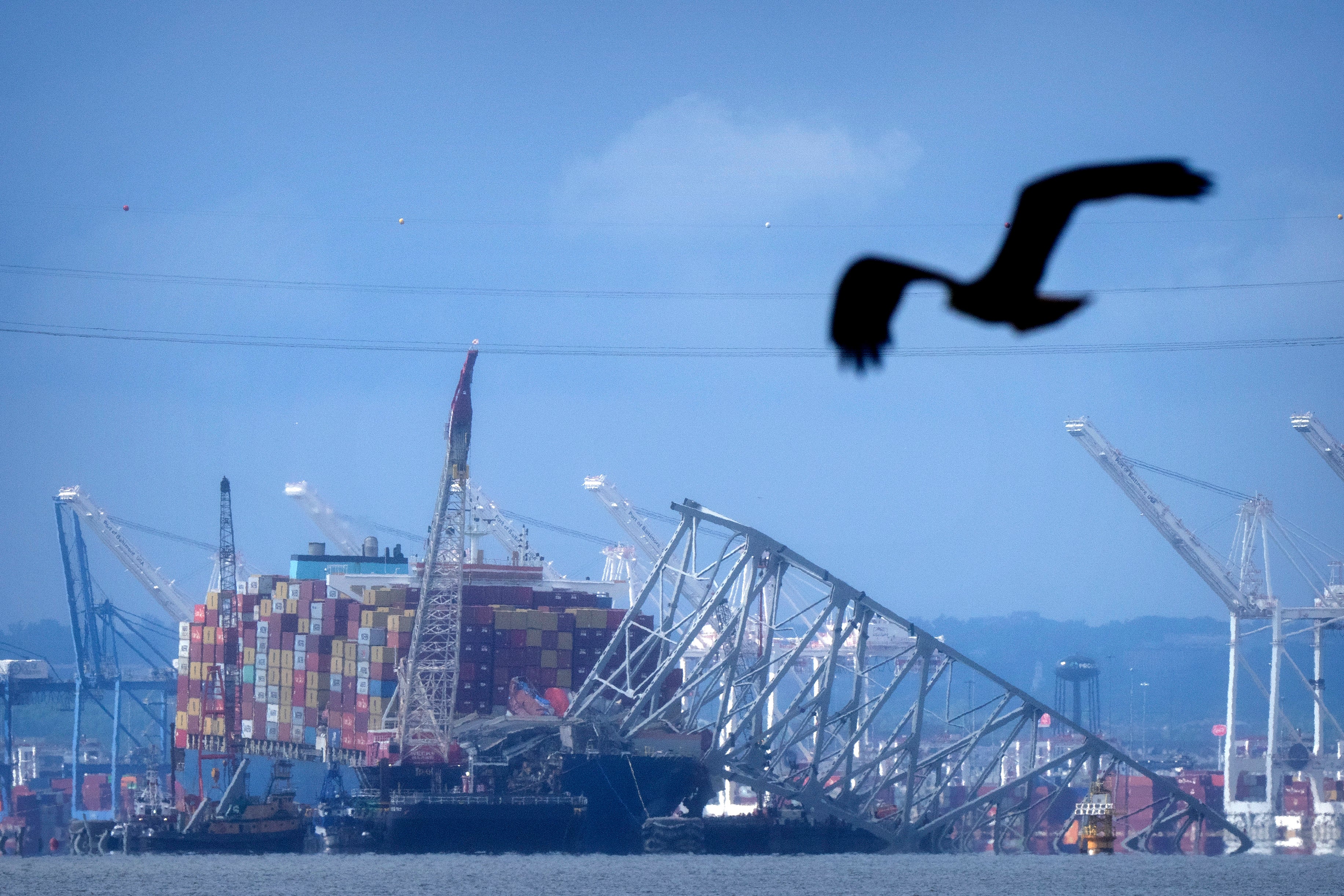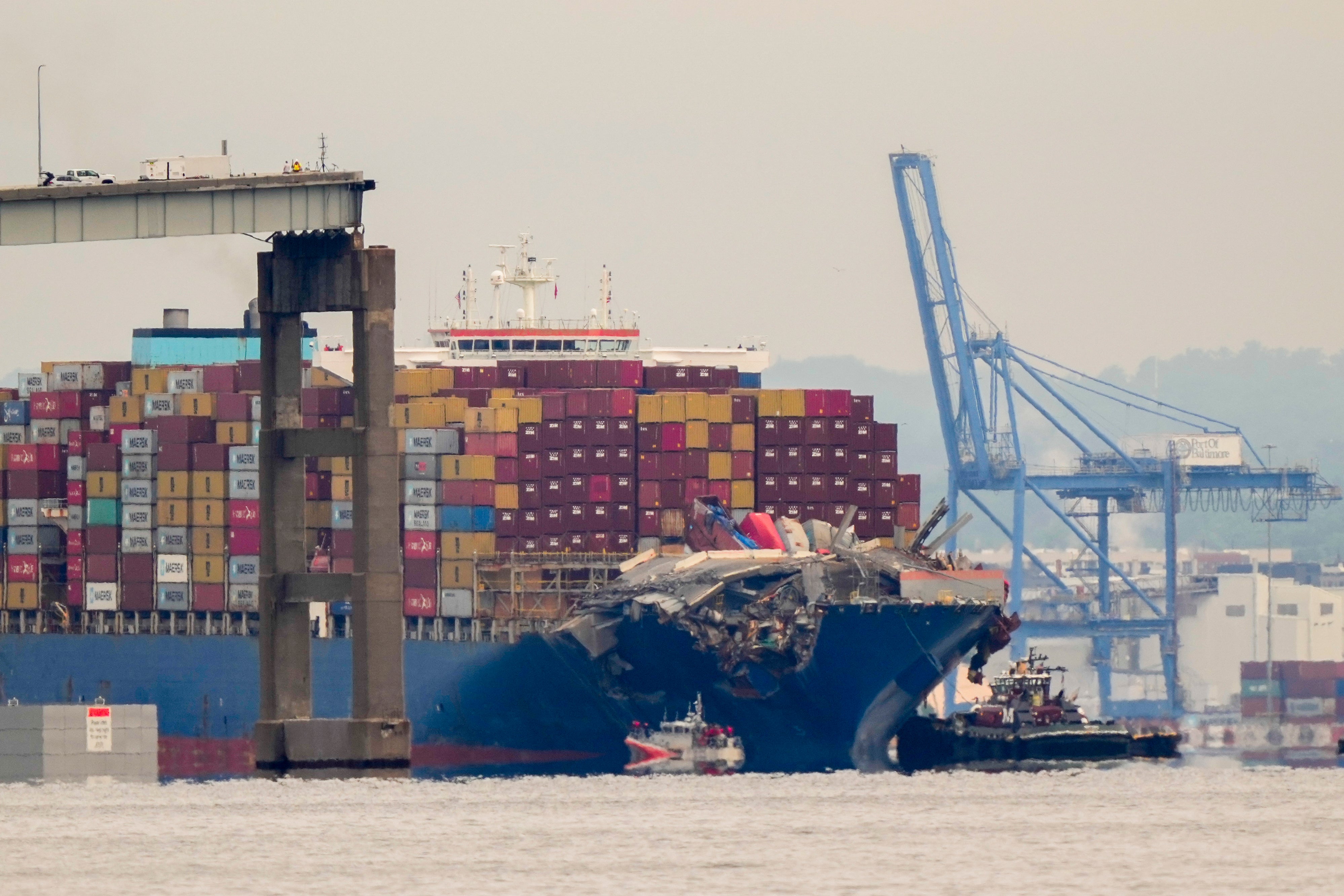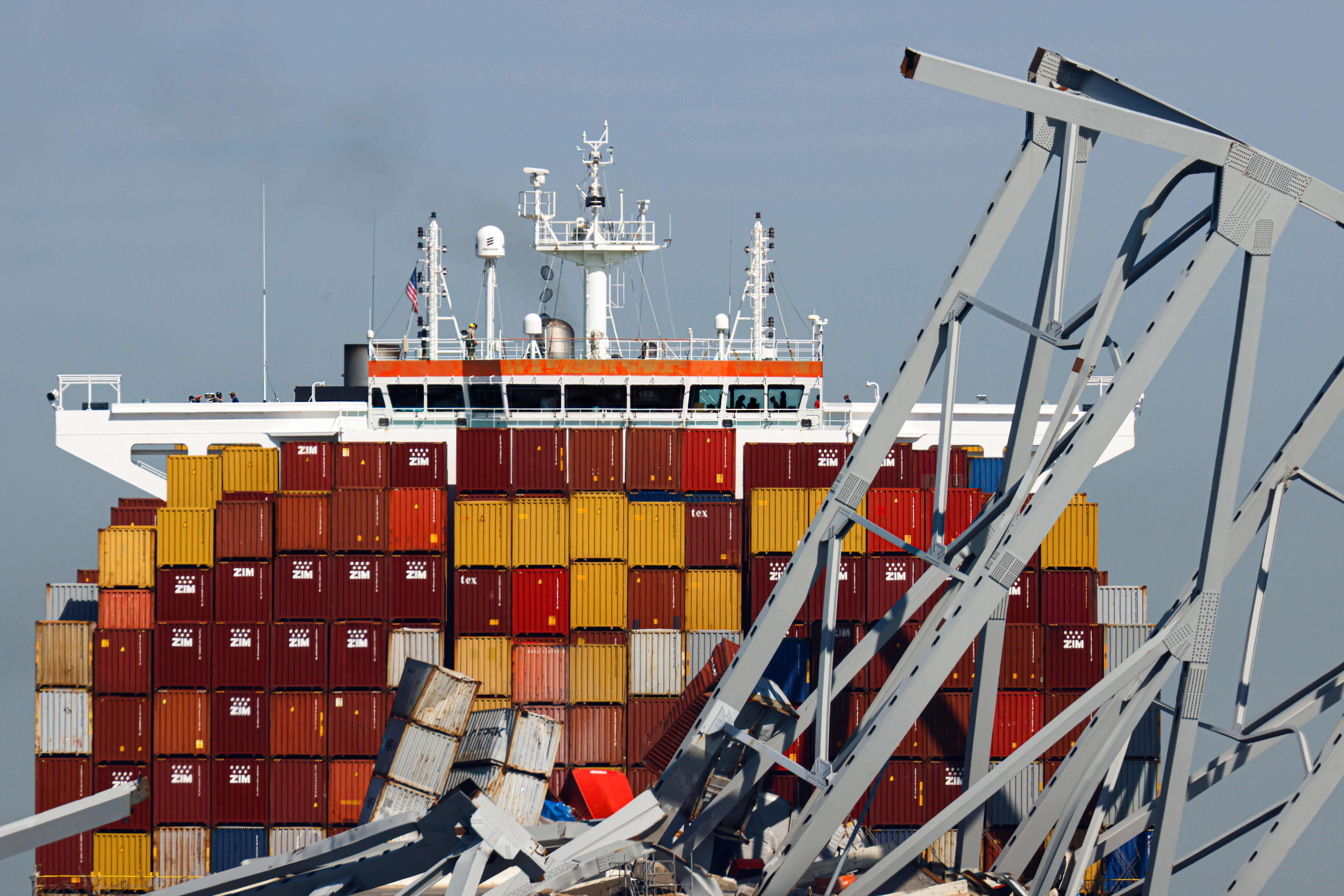Baltimore shipping channel finally fully reopens after bridge collapse
Crews removed an estimated 50,000 tons of steel and concrete from the Patapsco River

Your support helps us to tell the story
From reproductive rights to climate change to Big Tech, The Independent is on the ground when the story is developing. Whether it's investigating the financials of Elon Musk's pro-Trump PAC or producing our latest documentary, 'The A Word', which shines a light on the American women fighting for reproductive rights, we know how important it is to parse out the facts from the messaging.
At such a critical moment in US history, we need reporters on the ground. Your donation allows us to keep sending journalists to speak to both sides of the story.
The Independent is trusted by Americans across the entire political spectrum. And unlike many other quality news outlets, we choose not to lock Americans out of our reporting and analysis with paywalls. We believe quality journalism should be available to everyone, paid for by those who can afford it.
Your support makes all the difference.The main shipping channel into Baltimore’s port has fully reopened to its original depth and width following the collapse of the Francis Scott Key Bridge, which blocked most maritime traffic into the harbor.
Officials announced the full reopening on Monday evening. It comes after a massive cleanup effort as crews removed an estimated 50,000 tons of steel and concrete from the Patapsco River.
The channel was blocked by wreckage of the fallen bridge, which collapsed after a container ship lost power and crashed into one of its supporting columns, sending six members of a roadwork crew plunging to their deaths. All of the victims were Latino immigrants working an overnight shift to fill potholes on the bridge.
The Port of Baltimore, which processes more cars and farm equipment than any other in the country, was effectively closed for several weeks while the wreckage was removed. Crews were able to reopen portions of the deep-draft channel in phases, restoring some commercial traffic in recent weeks.

On May 20, the wayward cargo ship Dali was refloated and guided back to port. The vessel had been stuck amid the wreckage for almost two months, with a massive steel truss draped across its damaged bow.
After the Dali was moved, crews opened a channel that was 50 feet (15 meters) deep and 400 feet (122 meters) wide. The full federal shipping channel is 700 feet (213 meters) wide, which means two-way traffic can resume, officials said. They said other additional safety requirements have also been lifted because of the increased width.
Thousands of longshoremen, truckers and small business owners have seen their jobs impacted by the collapse, prompting local and state officials to prioritize reopening the port and restoring its traffic to normal capacity in hopes of easing the economic ripple effects.
The announcement means the commerce that depends on the busy port can begin ramping back up.

Officials said a total of 56 federal, state and local agencies participated in the salvage operations, including about 500 specialists from around the world who operated a fleet of 18 barges, 22 tugboats, 13 floating cranes, 10 excavators and four survey boats.
“I cannot overstate how proud I am of our team,” said Col. Estee Pinchasin, Baltimore district commander for the Army Corps of Engineers. “It was incredible seeing so many people from different parts of our government, from around our country and all over the world, come together in the Unified Command and accomplish so much in this amount of time.”
In a statement Monday, Pinchasin also acknowledged the loss of the victims’ families.
“Not a day went by that we didn’t think about all of them, and that kept us going,” she said.
The Dali lost power shortly after leaving Baltimore for Sri Lanka in the early hours of March 26. A National Transportation Safety Board investigation found it experienced power outages before starting its voyage, but the exact causes of the electrical issues have yet to be determined. The FBI is also conducting a criminal investigation into the circumstances leading up to the collapse.
Officials have said they hope to rebuild the bridge by 2028.